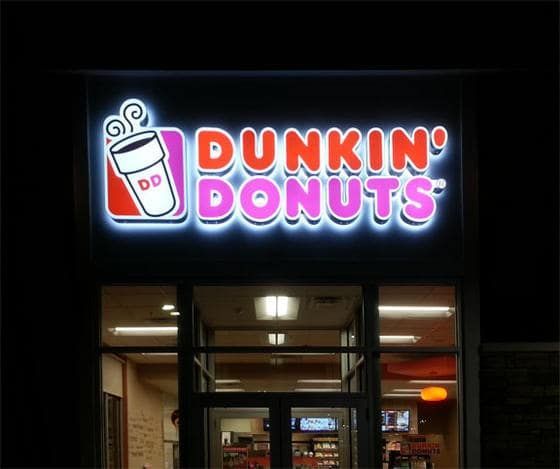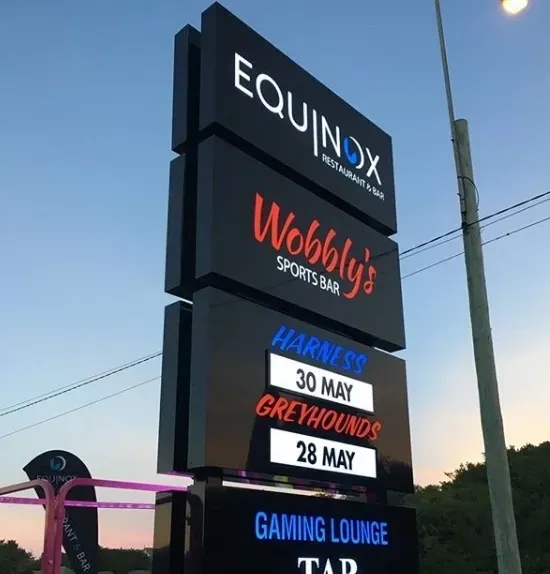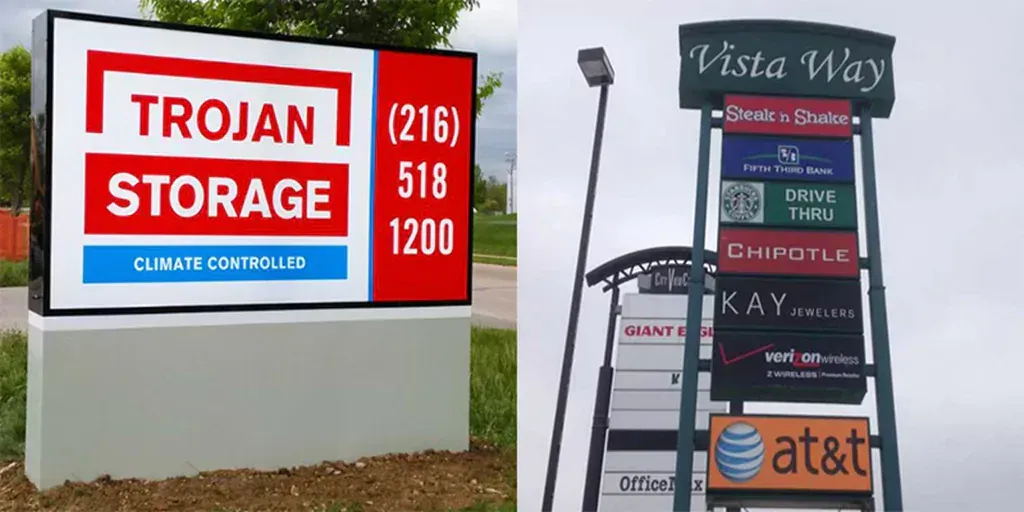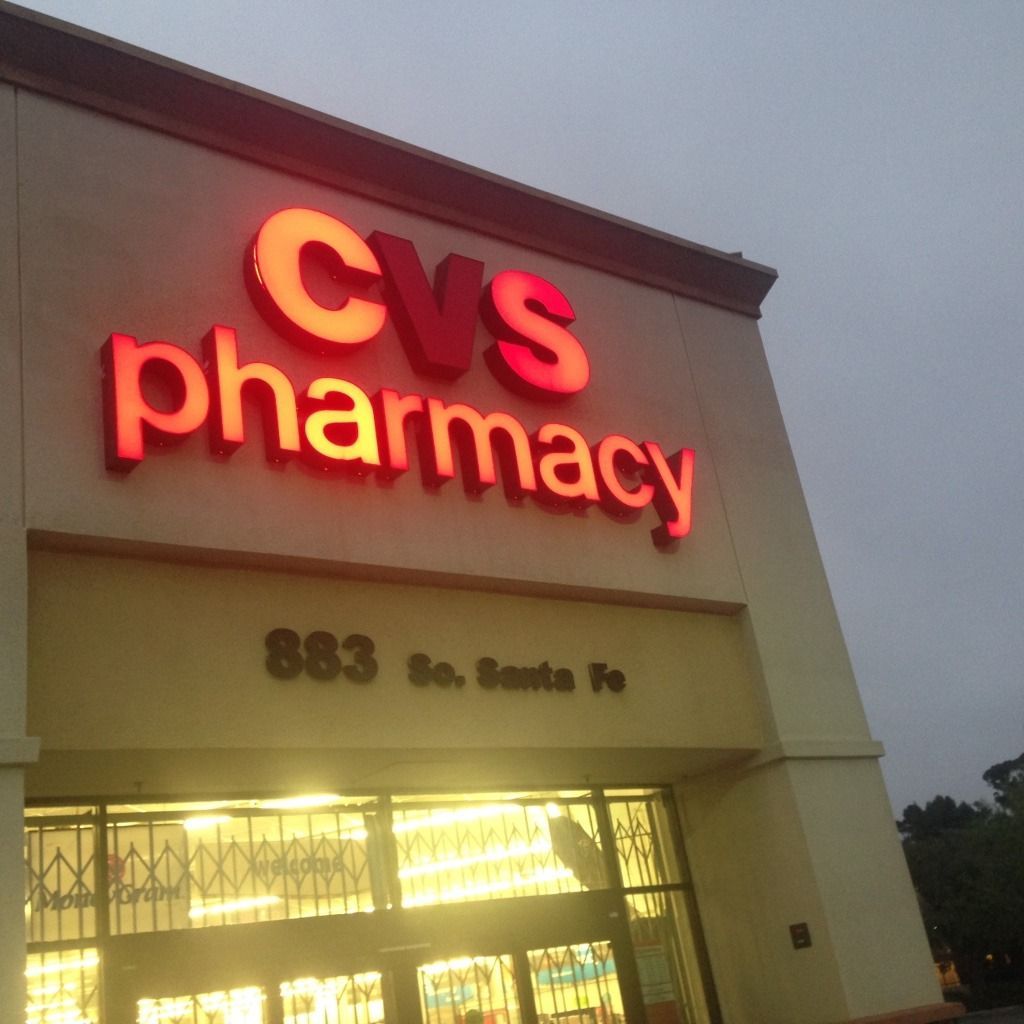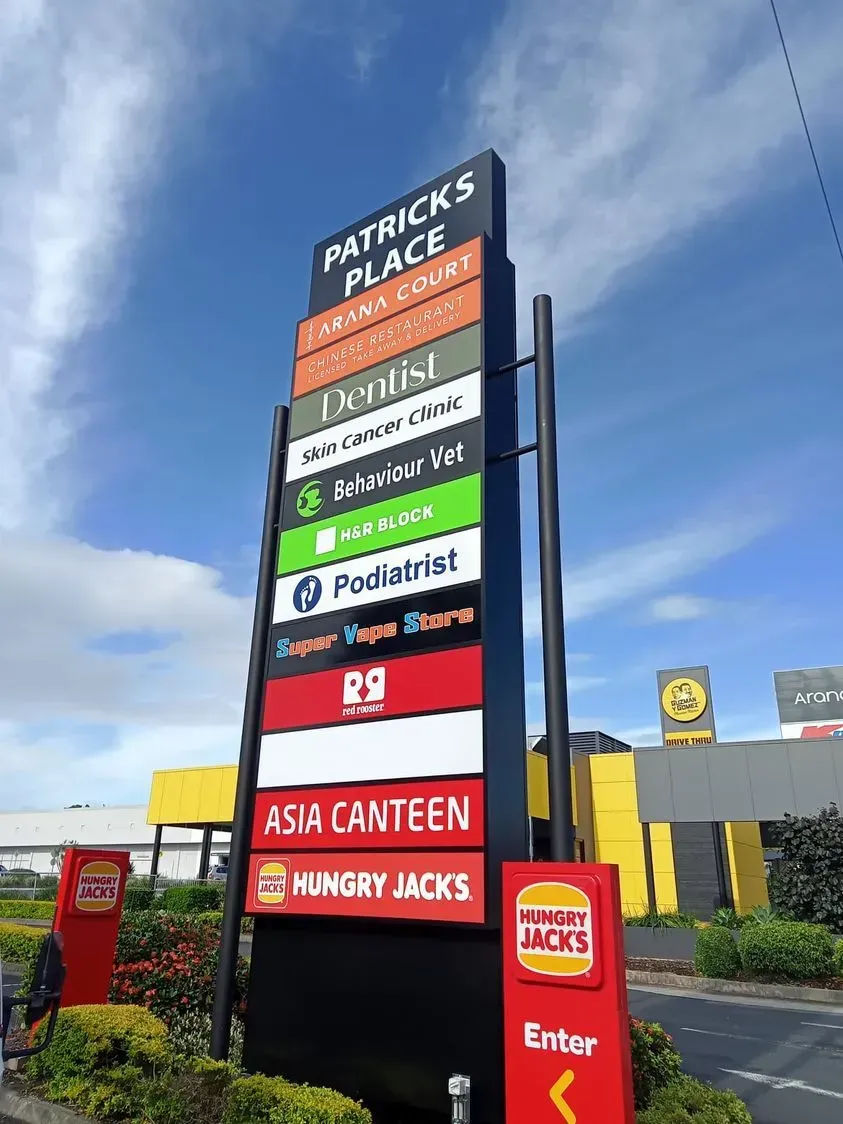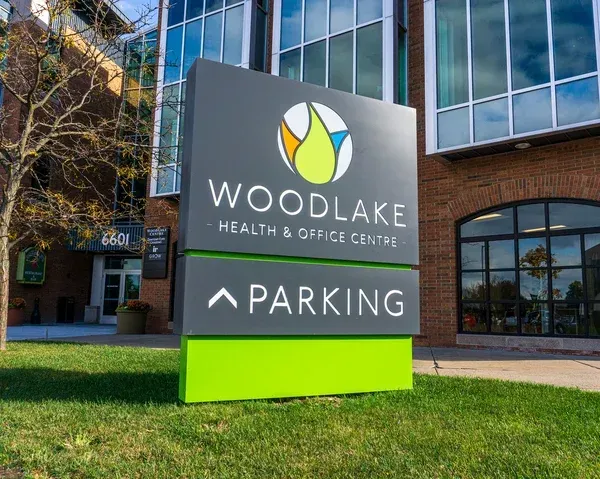Why Energy-Efficient Lighting Is a Smart Choice for Retail and Gas Stations
The Advantages of Energy-Efficient Lighting for Retail and Gas Station Businesses
The Case for Energy-Efficient Lighting
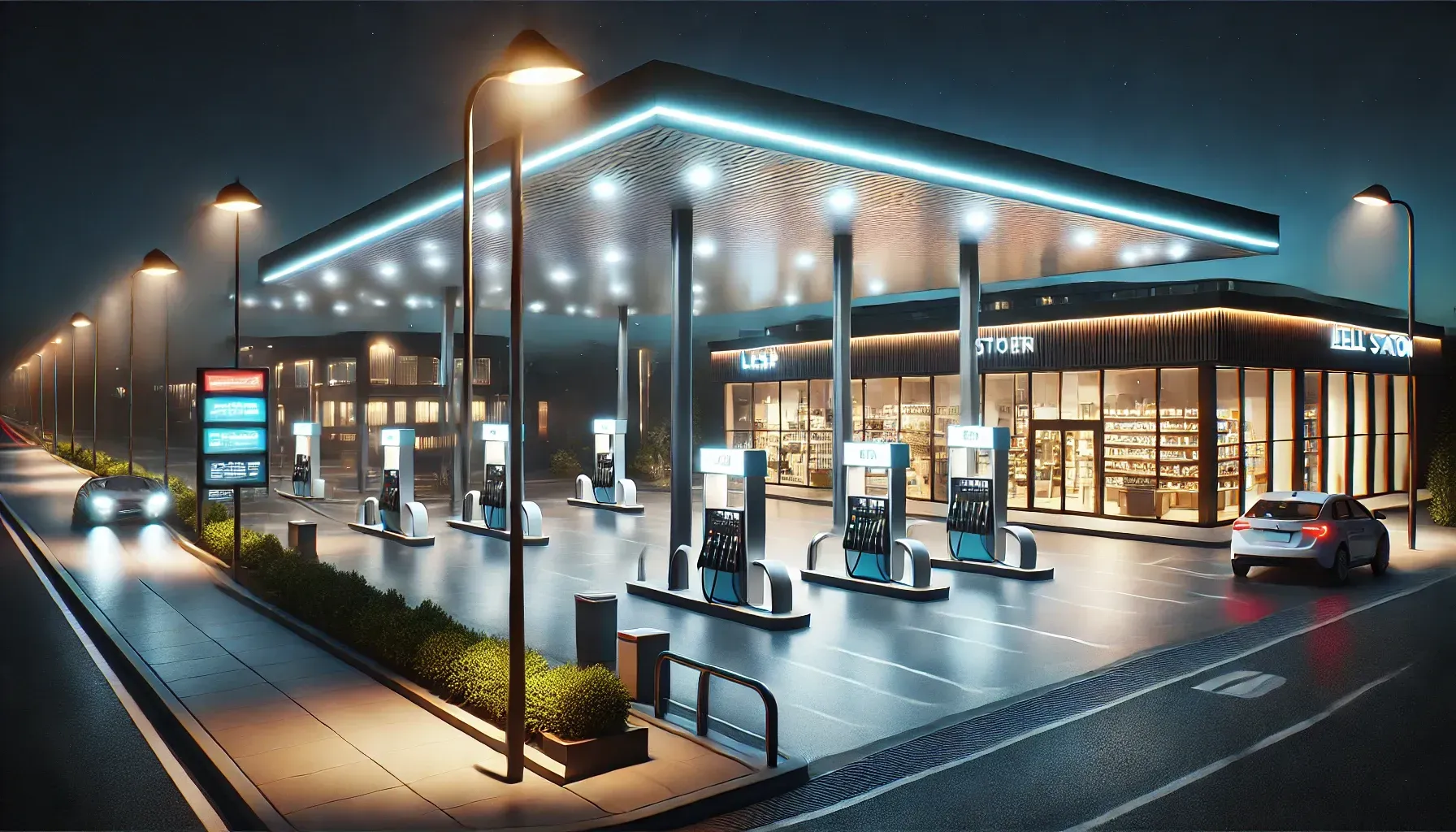
Lighting is an essential component of any retail or petroleum business, impacting safety, aesthetics, and operational costs. By switching to energy-efficient lighting systems like LEDs and smart lighting, businesses can significantly reduce expenses while improving visibility and environmental sustainability. Modern lighting solutions offer unparalleled efficiency, versatility, and durability, making them a smart investment for long-term success.
Cost-Saving Benefits of Energy-Efficient Lighting
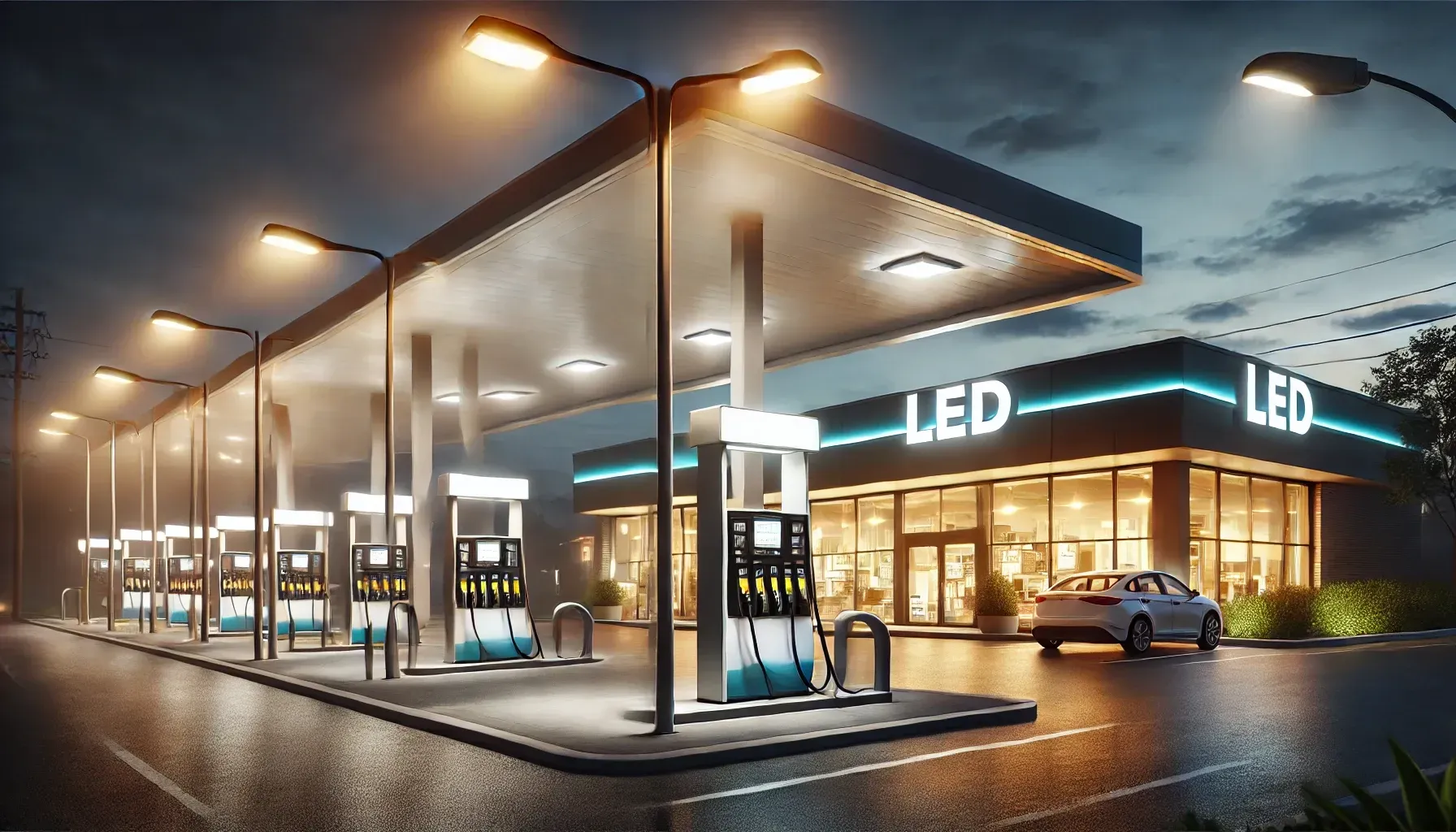
One of the most compelling reasons to upgrade to energy-efficient lighting is the significant cost savings it provides.
- Lower Energy Bills: LEDs use up to 75% less energy than traditional lighting, translating to substantial reductions in electricity costs, especially for businesses with high lighting demands, such as gas stations and retail spaces.
- Reduced Maintenance Costs: LED lights last 2–4 times longer than conventional lighting systems, requiring fewer replacements and less frequent maintenance, which saves both time and money.
- Return on Investment: While the upfront cost of energy-efficient lighting may be higher, the energy and maintenance savings deliver a rapid ROI, often within just a few years.
By adopting energy-efficient lighting, businesses can allocate the savings toward other operational needs, boosting overall profitability.
Environmental Advantages of Energy-Efficient Lighting

In an era where sustainability matters to consumers, energy-efficient lighting helps businesses reduce their environmental impact while showcasing their commitment to eco-friendly practices.
Smaller Carbon Footprint
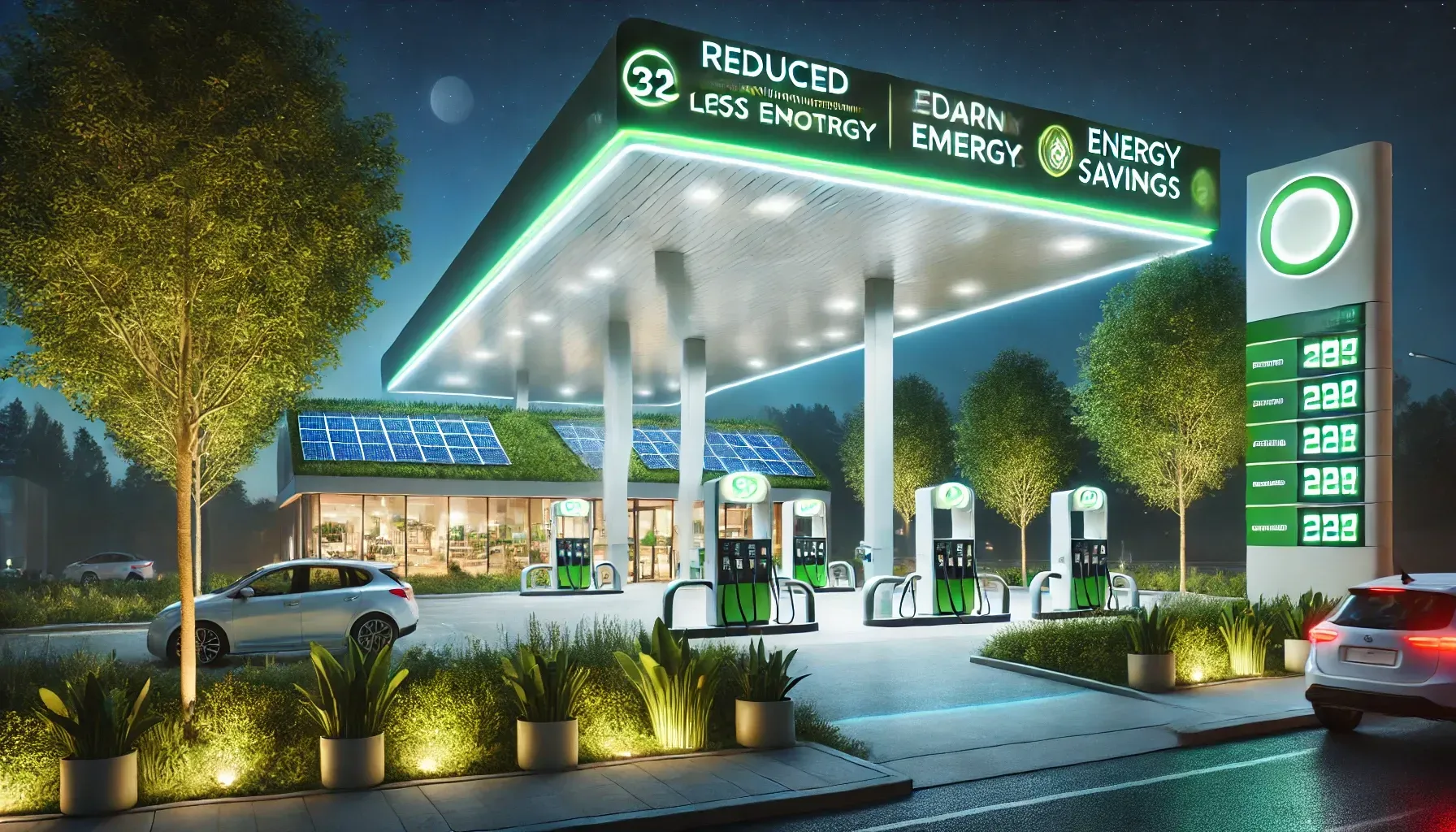
Energy-efficient lighting systems, such as LEDs and smart lighting, play a significant role in reducing the carbon footprint of businesses. By consuming significantly less electricity than traditional lighting systems, LEDs help decrease the demand on power plants, which in turn lowers greenhouse gas emissions.
- Lower Energy Demand: LEDs require less power to provide the same or better illumination, meaning fewer fossil fuels are burned to generate electricity. This directly reduces emissions of carbon dioxide (CO₂) and other harmful greenhouse gases.
- Alignment with Sustainability Goals: Many businesses are adopting eco-friendly practices to meet sustainability targets or align with consumer preferences for environmentally responsible brands. Switching to energy-efficient lighting is a practical, visible step toward achieving these goals.
- Long-Term Impact: Over time, the cumulative energy savings from using LEDs can make a significant difference in reducing the environmental footprint of industries like retail and petroleum.
Non-Toxic and Sustainable
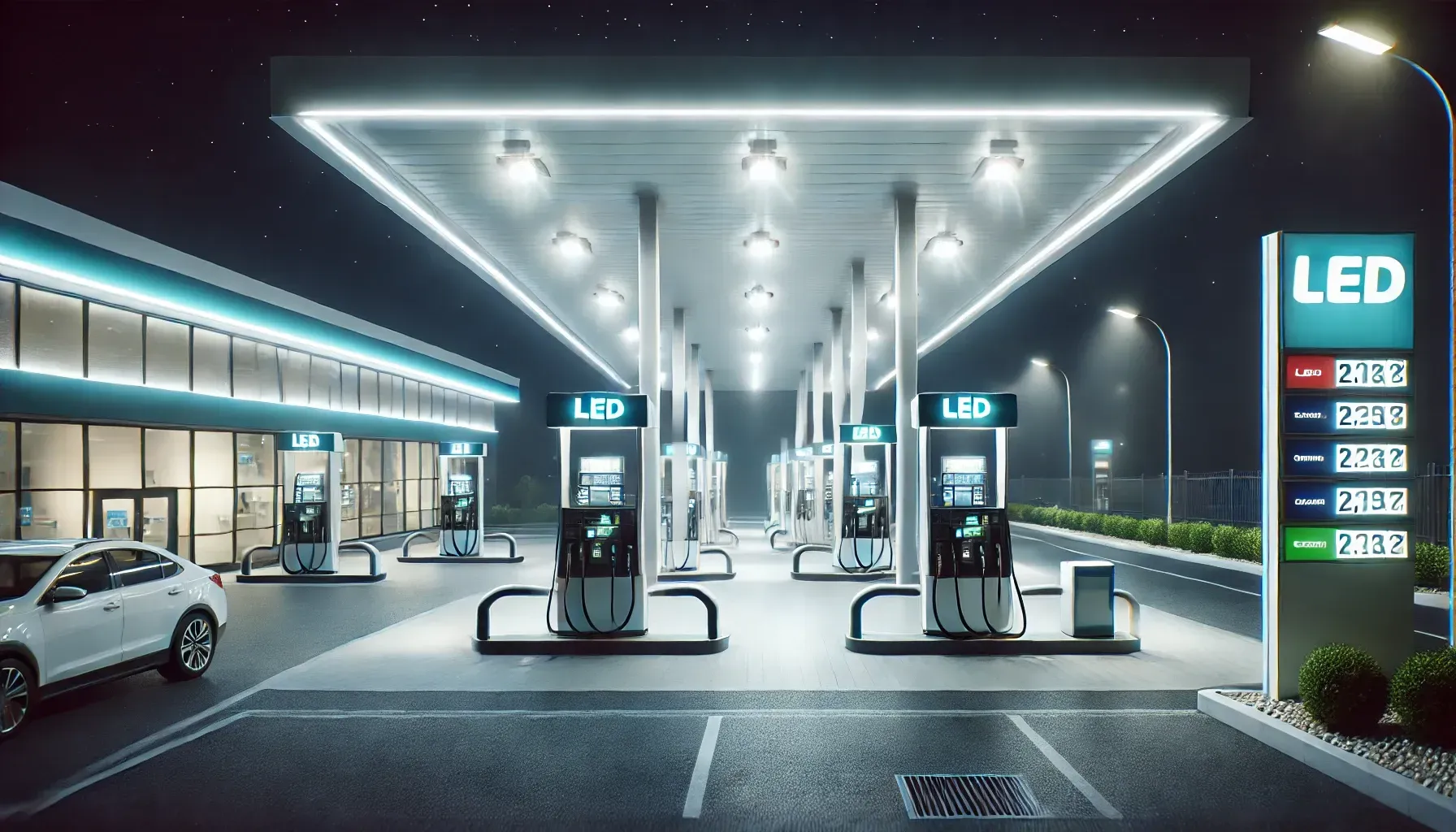
Unlike traditional fluorescent or incandescent lights, LED lighting systems are free from hazardous materials, making them safer for both users and the environment.
- No Mercury: Fluorescent bulbs contain mercury, a toxic element that poses risks during use and disposal. LEDs eliminate this risk, providing a safer lighting option for businesses and their customers.
- Environmentally Friendly Materials: LED lights are made with recyclable components, making it easier to reduce waste and repurpose materials at the end of their lifespan.
- Compliance with Regulations: Many regions have strict regulations regarding the disposal of hazardous materials. Using LEDs helps businesses avoid the complexities and costs associated with disposing of traditional lighting.
By choosing LED lighting, businesses not only enhance safety but also reduce their environmental impact by avoiding harmful chemicals.
Longevity Reduces Waste
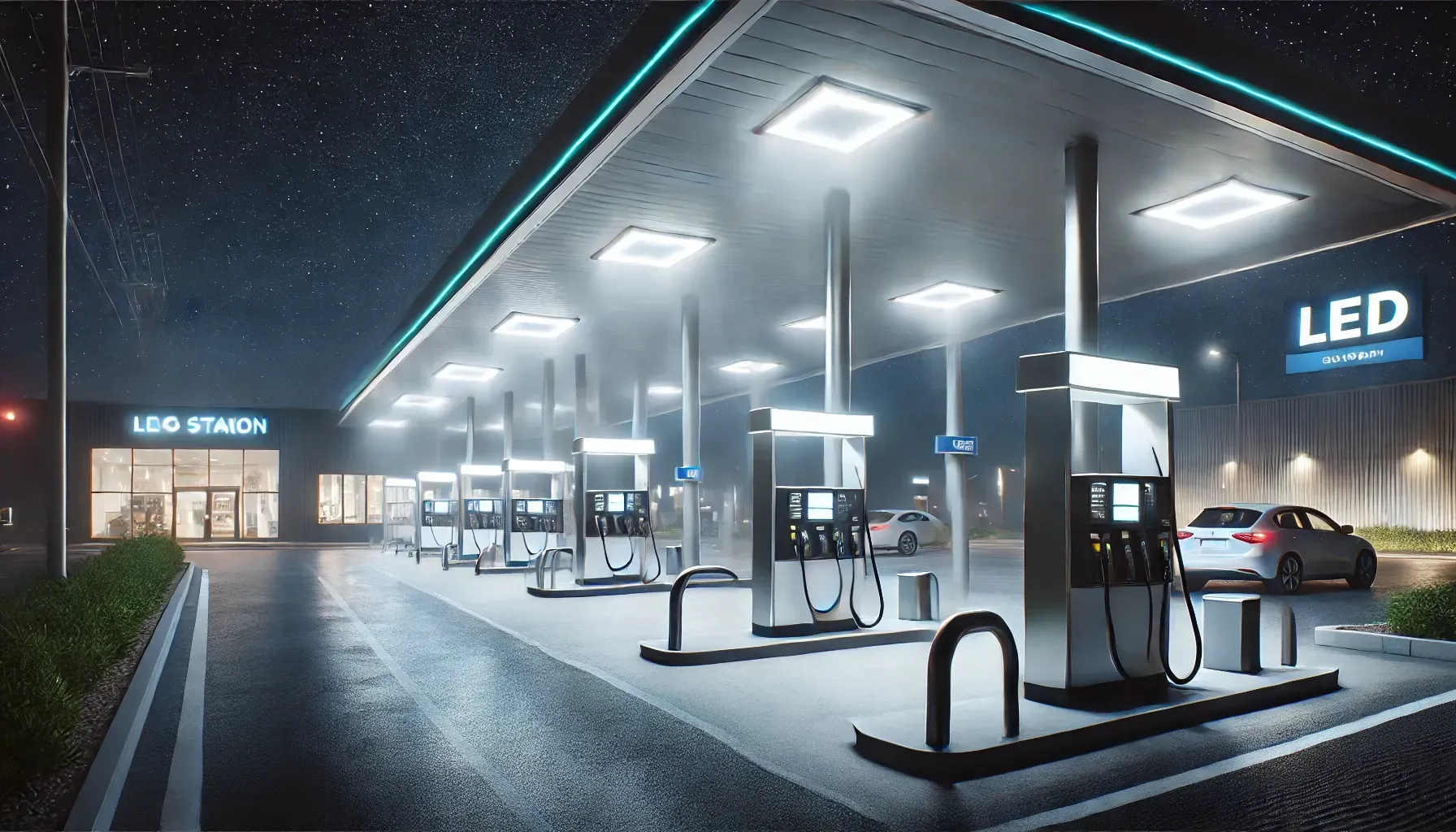
The extended lifespan of LED and smart lighting systems is a key factor in minimizing waste and contributing to a cleaner environment.
- Fewer Replacements: Traditional incandescent or fluorescent bulbs often need to be replaced multiple times within the lifespan of a single LED bulb. This leads to less frequent manufacturing, shipping, and disposal of replacement products, reducing the overall environmental burden.
- Less Waste in Landfills: With fewer bulbs needing disposal, LEDs significantly cut down on the volume of waste sent to landfills. This is especially important for businesses with large-scale lighting needs, like gas stations and retail stores.
- Durable and Reliable: LEDs are built to withstand tough conditions, such as extreme temperatures or vibrations, making them less likely to fail prematurely. This durability further decreases the need for replacements.
By investing in energy-efficient lighting, businesses actively reduce their contribution to waste, promoting sustainability while benefiting from cost savings and operational convenience.
Improved Illumination for Safety and Aesthetics

Energy-efficient lighting systems provide superior illumination, which is essential for safety, security, and creating a positive customer experience.
- Enhanced Brightness: LED lights offer crisp, consistent illumination, making parking lots, storefronts, and gas station canopies safer and more inviting.
- Customizable Solutions: Smart lighting systems allow for adjustable brightness, color temperatures, and automation, enabling businesses to create the perfect lighting environment.
- Improved Visibility: Better lighting improves navigation, deters criminal activity, and ensures customers and employees feel safe, particularly at night.
With modern lighting systems, businesses can improve both functionality and aesthetics, leaving a lasting impression on customers.
Smart Lighting Systems: A Modern Upgrade
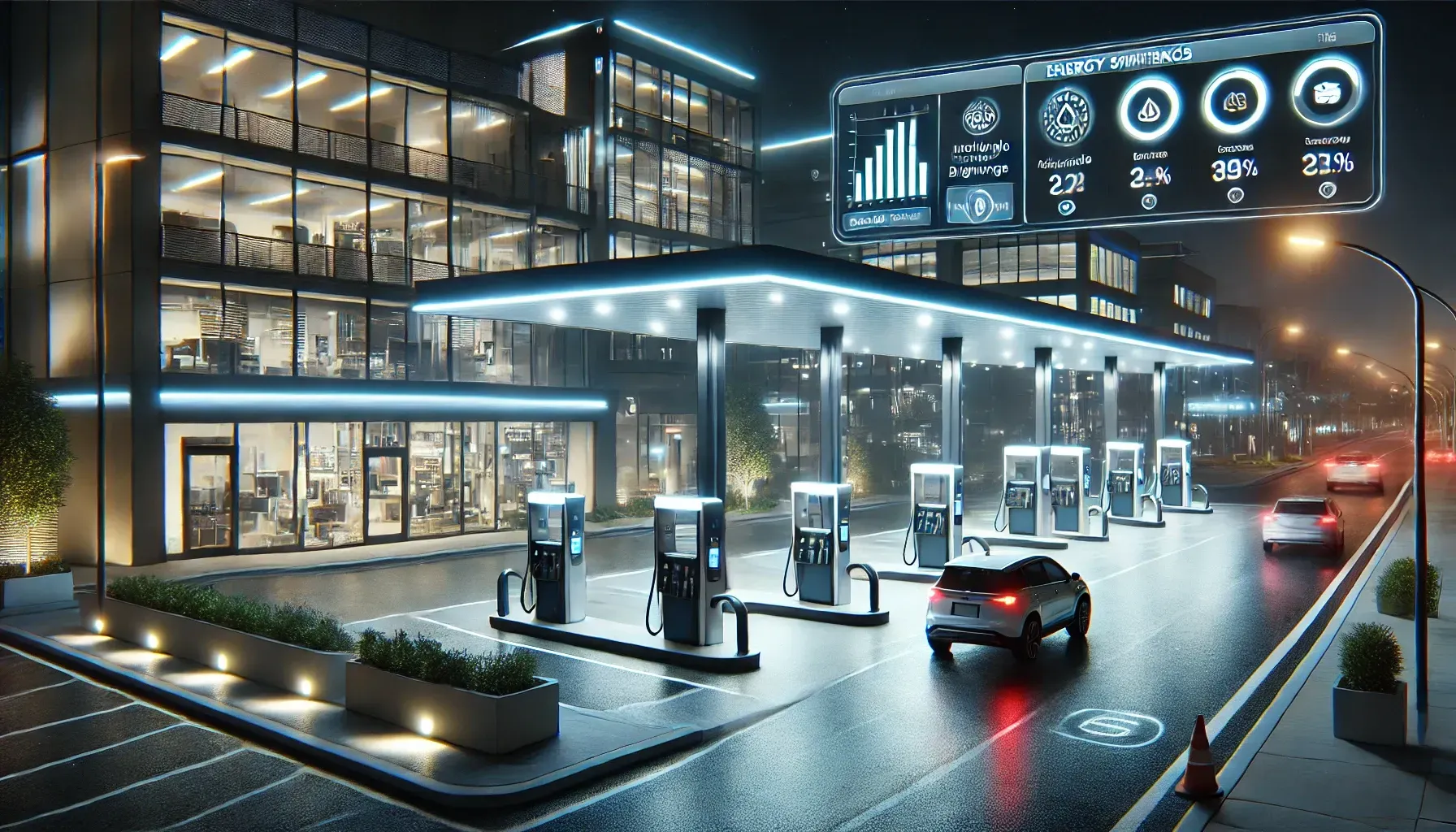
Smart lighting systems go beyond energy efficiency, offering advanced features that add convenience and further cost savings.
Automated Controls: Efficient Lighting Management
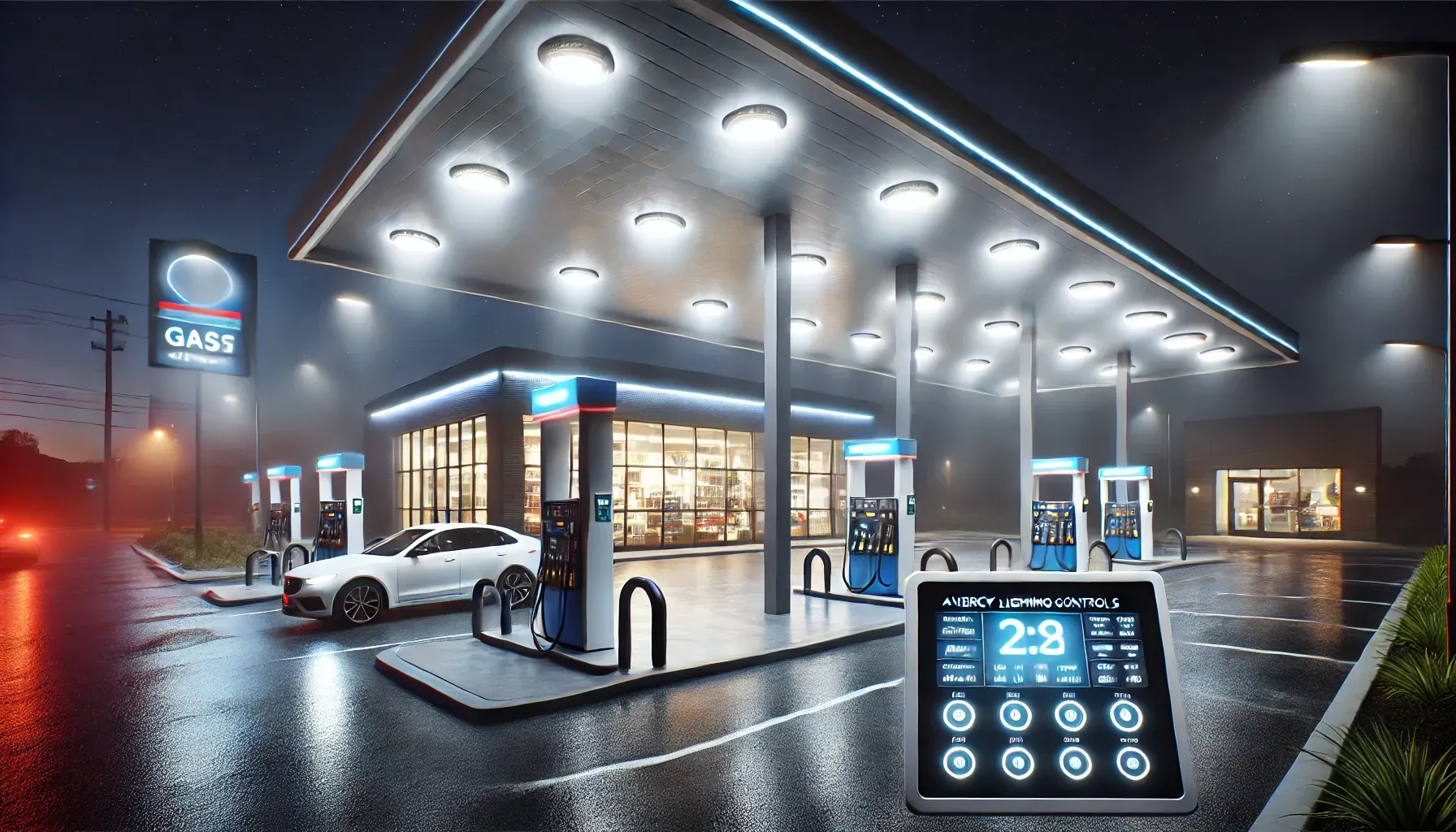
Automated lighting controls are a powerful feature of smart lighting systems, allowing businesses to optimize energy usage without constant manual adjustments.
- Scheduled Operations: Lighting can be programmed to automatically turn on, off, or dim at specific times based on business hours. For example, lights can brighten during peak operational hours and dim after closing, maintaining safety while conserving energy.
- Adaptable Settings: Schedules can be adjusted to account for seasonal changes, such as extended hours during holidays or earlier lighting during shorter daylight periods, ensuring consistent and efficient operation year-round.
- Reduced Human Error: Automated controls eliminate the risk of lights being left on unintentionally, reducing unnecessary energy waste and lowering operational costs.
By automating lighting schedules, businesses can enhance efficiency while maintaining a well-lit and welcoming environment for customers and employees.
Motion Detection: Energy Savings Through Smart Activation
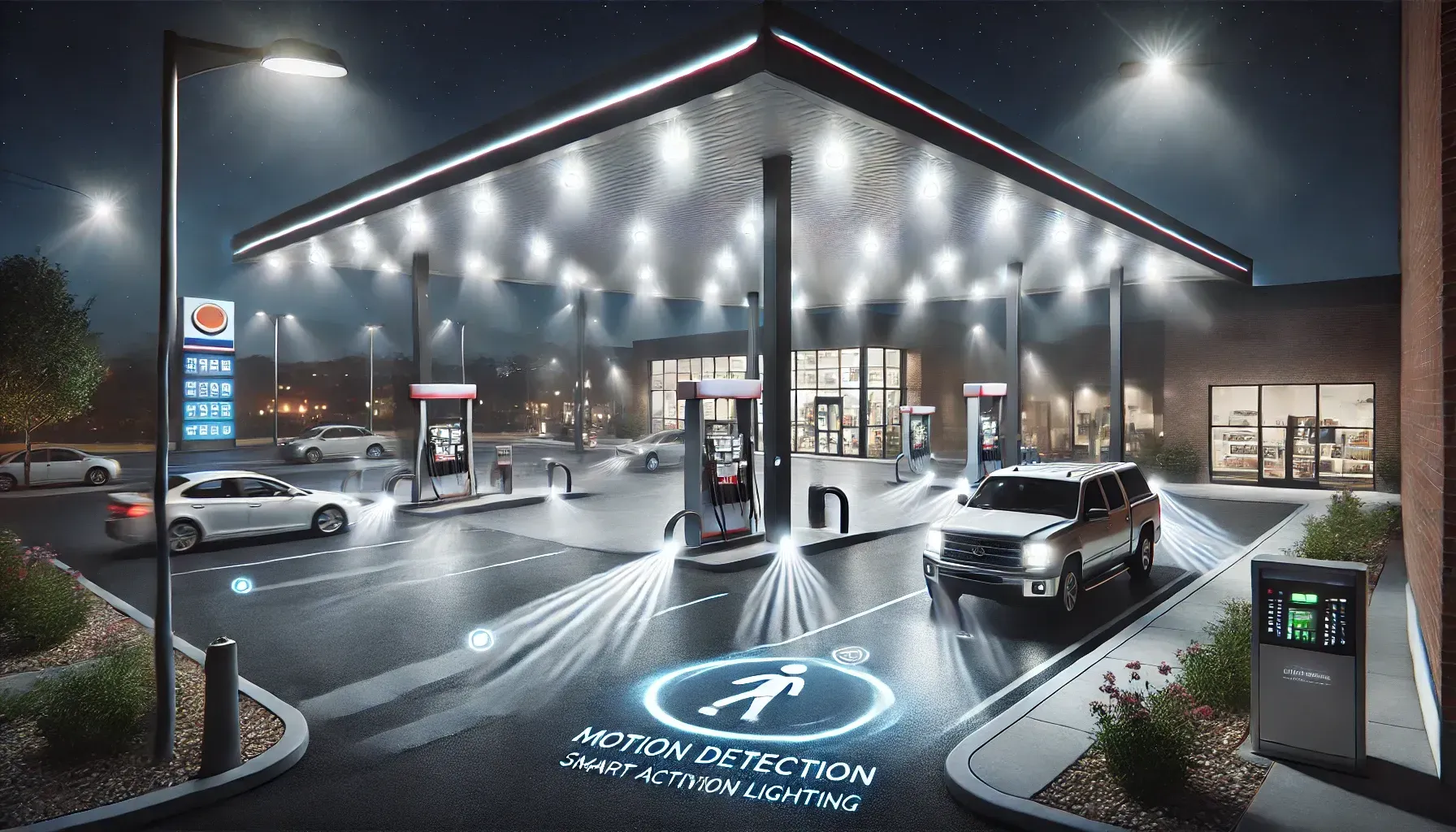
Motion detection is an innovative feature of smart lighting systems that ensures lights are only used when needed.
- Targeted Illumination: Motion-activated lights can brighten specific areas, such as parking lots, walkways, or entrances, only when movement is detected. This targeted use reduces energy consumption without compromising safety or visibility.
- Enhanced Security: Motion detection can also deter unauthorized activity. Sudden lighting in response to motion can discourage trespassers and provide a sense of safety for customers and employees.
- Customizable Sensitivity: Motion detectors can be adjusted to respond to specific activity levels, such as vehicles entering a gas station or customers approaching a convenience store entrance.
This feature ensures that energy is conserved during periods of inactivity, making it a practical and cost-effective solution for businesses of all sizes.
Remote Access: Convenient and Efficient Lighting Control
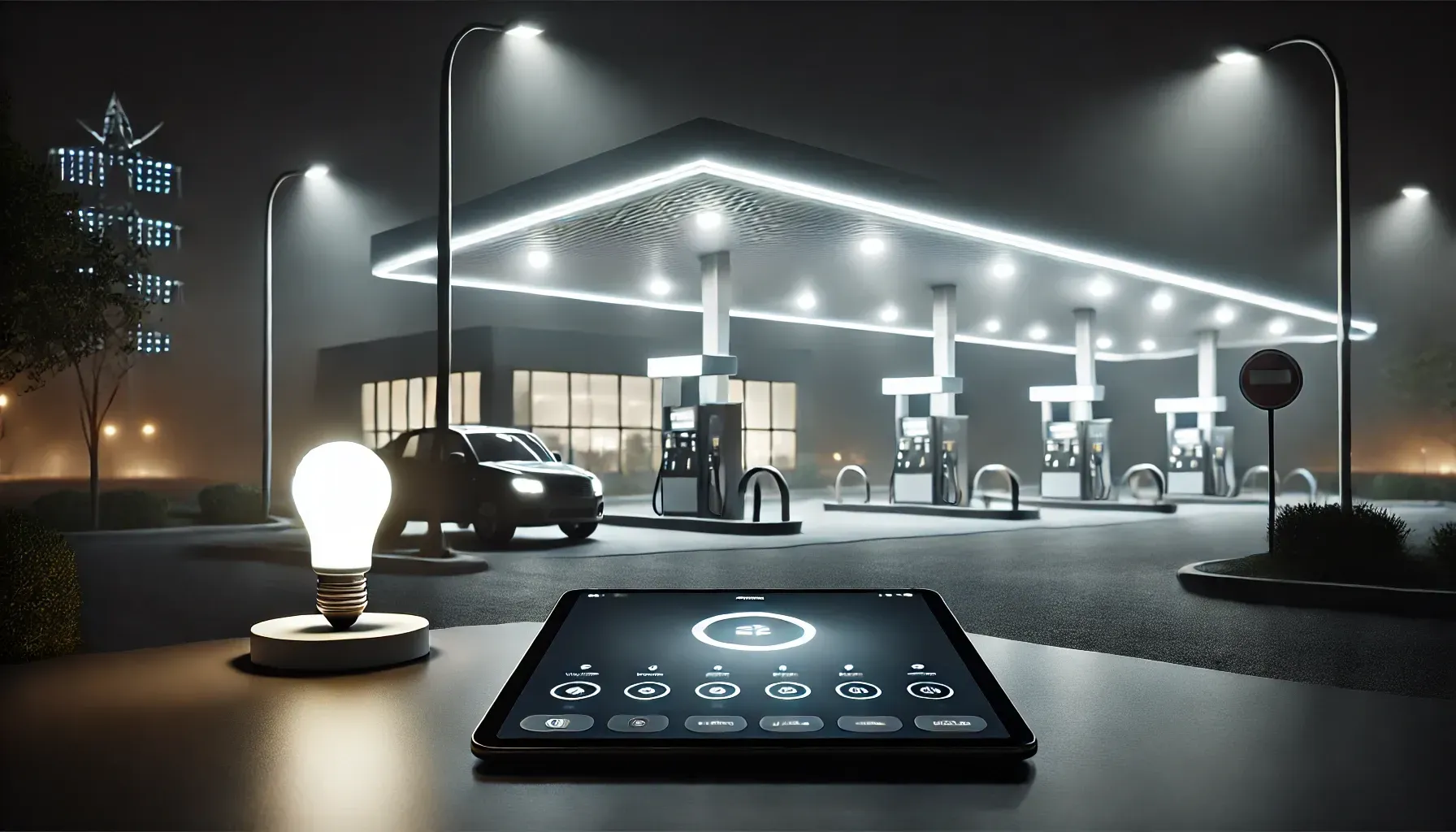
Remote access capabilities allow businesses to manage their lighting systems from anywhere, providing unparalleled convenience and control.
- Real-Time Adjustments: Through a mobile device or computer, business owners can modify lighting settings instantly. Whether dimming lights during slow hours or brightening them during high-traffic periods, adjustments can be made with just a few clicks.
- Monitoring Usage: Remote systems often come with analytics features that provide insights into energy usage, helping businesses identify areas for further optimization and savings.
- Emergency Control: In case of unexpected events, such as inclement weather or a power outage, lighting can be managed remotely to ensure safety and maintain operations.
- Scalable for Multiple Locations: For businesses with multiple sites, remote access makes it easy to control and synchronize lighting across all locations, ensuring consistency and efficiency.
With remote access, businesses gain the flexibility to optimize their lighting systems anytime and anywhere, enhancing operational efficiency and energy management.
Why Horizon Sign & Lighting Is Your Partner for Energy-Efficient Solutions
With over 30 years of expertise in lighting and signage, Horizon Sign & Lighting specializes in helping retail and petroleum businesses switch to energy-efficient systems. From assessing your current setup to designing and installing advanced lighting solutions, we ensure your business benefits from lower costs, improved illumination, and environmental sustainability.
Let us help you achieve your goals with tailored lighting solutions that enhance safety, aesthetics, and efficiency.
Contact us today to learn more about upgrading to energy-efficient lighting for your retail or petroleum business.
FAQs About Energy-Efficient Lighting
How much can I save by switching to energy-efficient lighting?
Businesses can save up to 75% on energy costs by switching to LED lighting, along with reduced maintenance expenses due to the longer lifespan of LEDs.
Are LED lights brighter than traditional lighting?
Yes, LED lights provide superior brightness and more consistent illumination, making them ideal for high-visibility areas like parking lots, gas station canopies, and retail spaces.
What are the environmental benefits of LED lighting?
LED lighting reduces energy consumption, lowers greenhouse gas emissions, and generates less waste due to its long lifespan. Unlike traditional lighting, LEDs don’t contain hazardous materials like mercury.
How do smart lighting systems work?
Smart lighting systems use automated controls, motion sensors, and remote management to optimize energy usage. They allow you to customize lighting settings for specific times or conditions, saving energy and enhancing convenience.
Is the upfront cost of energy-efficient lighting worth it?
Absolutely! While the initial investment may be higher, the long-term savings on energy bills and maintenance, combined with improved lighting quality, make energy-efficient systems a cost-effective and smart choice.


